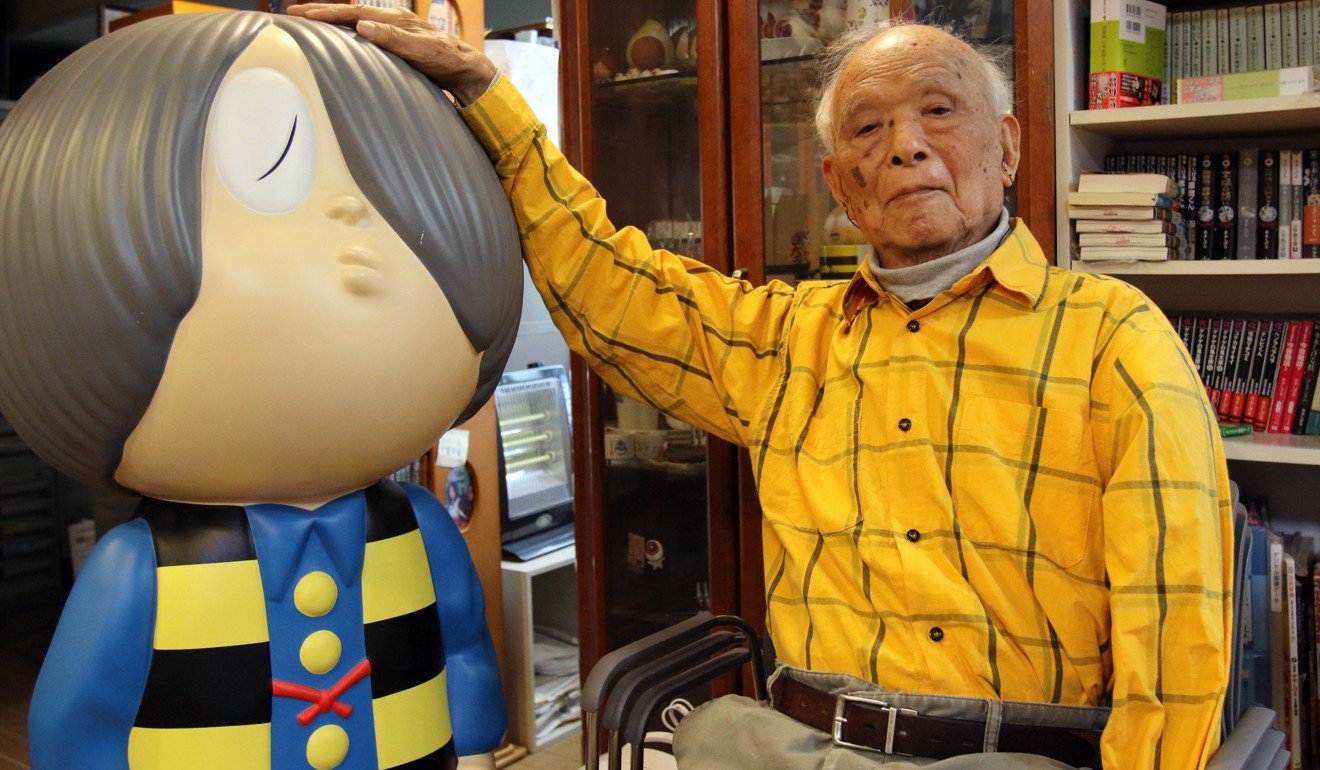
Manga legend Mizuki forced to depict Japanese victories not war horrors in comics, private journal reveals
Shigeru Mizuki died aged 93 in November 2015 and the essay was recently discovered in his papers by his daughter at his former home in Tokyo
An unpublished essay penned by arguably Japan’s best-loved manga artist reveals the late Shigeru Mizuki’s frustrations at being forced to depict Japanese victories in his post-war works.
A veteran of the war, Mizuki contracted malaria after being sent to Papua New Guinea in 1942 and saw his fellow soldiers die from their wounds or disease. The sole survivor of his unit, Mizuki eventually left the army when he lost his left arm in an Allied air raid.
After the war, Mizuki taught himself to draw with his other hand and resumed a career as an artist. He later specialised in manga featuring ghosts and ghouls and became famous for the GeGeGe no Kitaro series.

Earlier in his career, however, he had been obliged to make ends meet by telling tales of heroic actions and sacrifices made by ordinary soldiers during the war.
Mizuki died aged 93 in November 2015 and the essay was recently discovered in his papers by his daughter at his former home in Tokyo.
“The stories I wanted to tell were of losing battles, but that was not possible,” Mizuki wrote. “Boys are only interested in reading about spectacles – up until the battle of Guadalcanal, or so.

“To make sure that a book sells, the content needs to be affirmative of war,” he wrote, according to the Asahi newspaper. “Drawing out your own thoughts and making money – the manga business does not work like that.”
The essay is believed to have been written in 1967 and reflected his feelings on contributing previously to the Shonen Senki (Boys’ War Chronicle) manga. One of the series he contributed was called Kaiten, the human torpedo and lionised sailors who set out on suicide missions against Allied warships.

“Drawing these manga was probably the only way that he could earn a living after the war, but it looks to me as if this was his turning point,” said Makoto Watanabe, an associate professor of communications and media at Hokkaido Bunkyo University, pointing out that the essay was written in the same year that he produced his first GeGeGe no Kitaro work.

“When I was a school kid, I used to read his monster stories and, at the time, I had no idea about his war experiences or his feelings on the war, but looking at some of the characters in those manga now I get a better sense of his emotions,” he told the South China Morning Post.
“The monster manga have good and brave characters, but they also have hateful and frightening individuals,” he said.

“I would say that a lot of what he drew was taken from his own experiences because that was almost certainly the best way he had of expressing himself. Possibly it was the only way he had to communicate some of his feelings after coming back from the war.”
Mizuki’s wife, Nunoe, told the Asahi that her late husband had insisted on telling people that war is “a foolish thing”.

